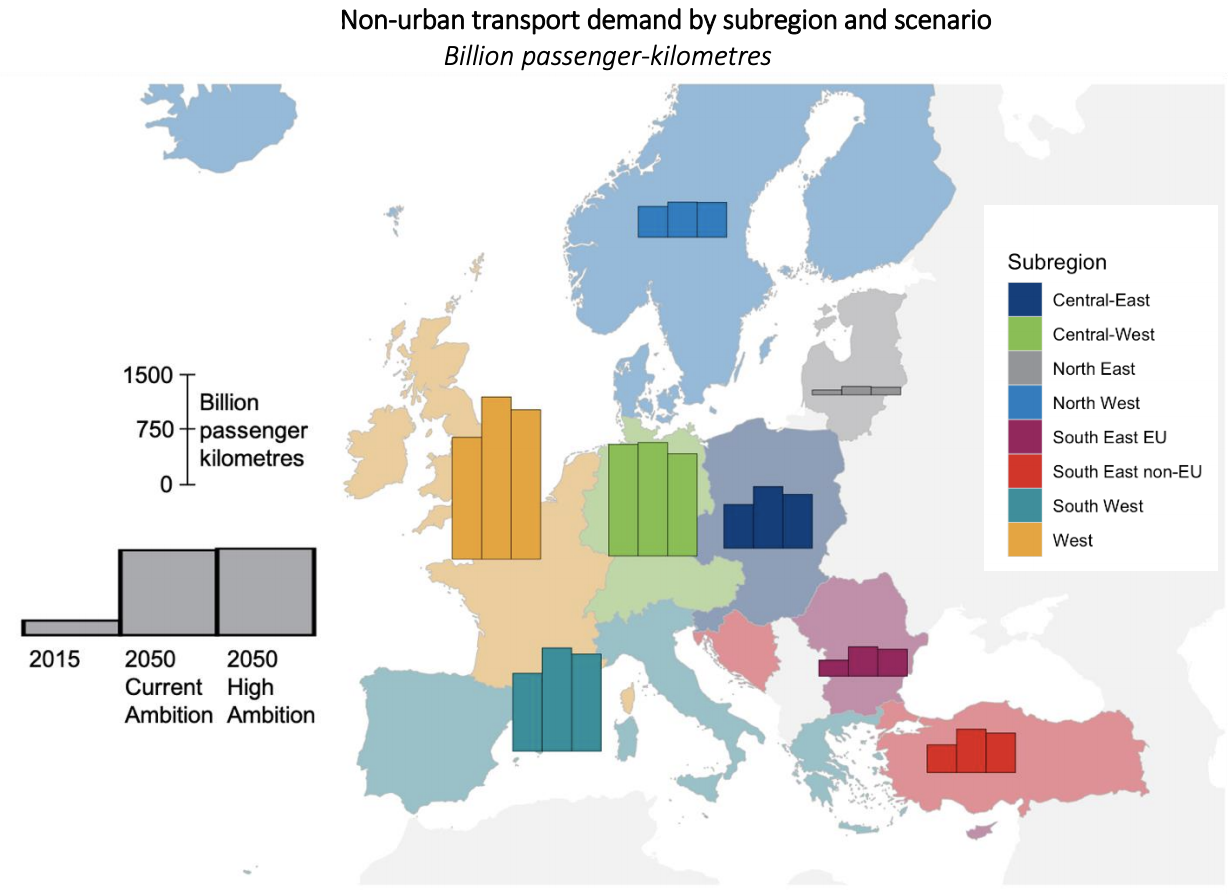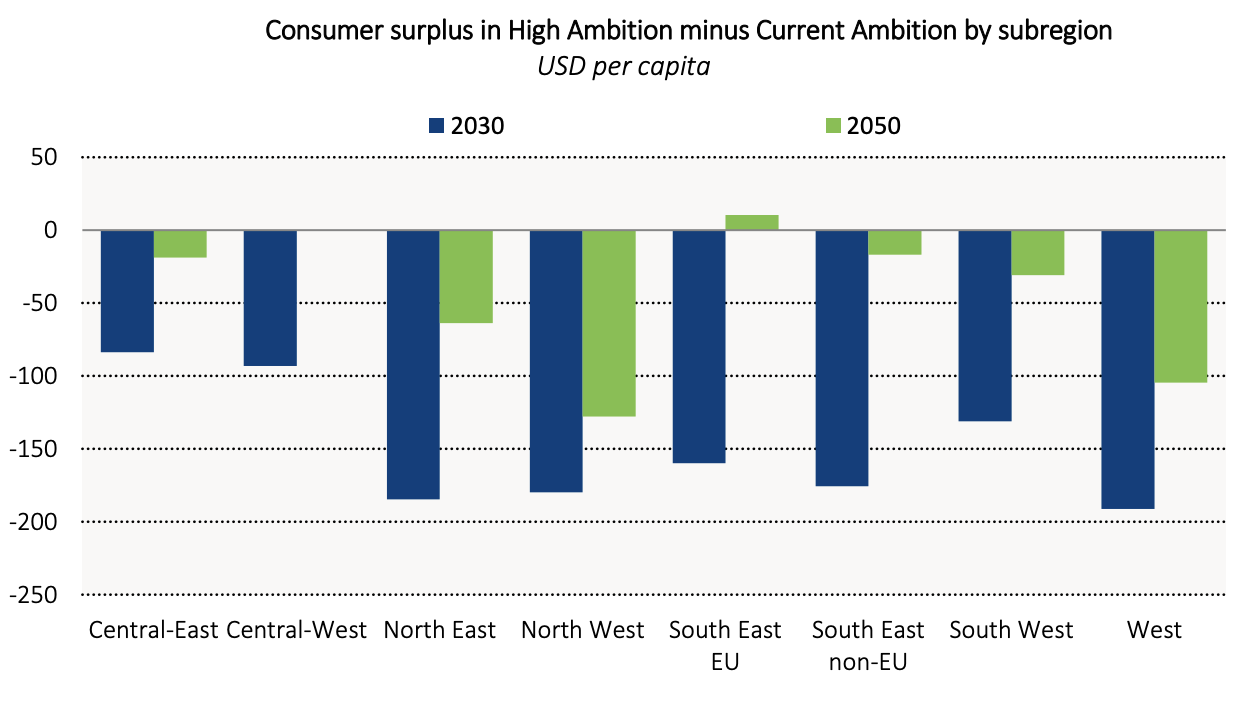Decarbonising Transport in Europe

With funding from the European Commission’s Horizon 2020 program, the International Transport Forum at the OECD (ITF) is conducting a quantitative study to determine how Europe might achieve its carbon reduction targets in the transportation sector. ITF engaged experts from across the globe to develop two realistic scenarios: Current Ambition, which reflects the policies and projects already or soon to be implemented, and High Ambition, which represents more aggressive climate action. Building off its uniquely global four-step travel demand models, ITF estimated how transport activity and emissions would evolve in each scenario through 2050. Given that transportation is the only main economic sector whose emissions increased since 1990 in Europe, ITF’s study is particularly pertinent to policymakers.
Under a temporary contract, I co-authored ITF’s report titled “Overview of ITF policy scenarios - Description, assumptions and results”. I developed code to analyze model results for freight and non-urban passenger transport, identified key insights, and wrote the introduction and non-urban passenger chapters. We found that Europe can indeed meet its target to cut transportation emissions to 60% below 1990 levels by 2050 if it employs the measures described in the High Ambition scenario.
In assessing the results for the non-urban passenger sector, I found that long-haul aviation deserves urgent attention. Demand for international air travel is expected to grow dramatically, but low-carbon aircraft or Sustainable Aviation Fuels (SAFs) are far from competitive. I also rdescribed how decarbonization policies will shape the transportation network and revealed significant disparities in travel emissions between regions.

As with any public intervention, decarbonisation measures create winners and losers, with some benefitting from improved efficiency and others beginning to pay for externalities they could previously ignore. To capture the distribution of these costs and benefits, I calculated the change in consumer surplus between the High and Current Ambition scenarios for each subregion in Europe. I found that much of the cost burden will fall on regions that currently generate the most emissions, and that costs will eventually diminish across the region as low-carbon technologies penetrate the market.

To disseminate findings, ITF held a two-day public webinar in which I presented non-urban passenger results and engaged with a dynamic panel of industry experts.
